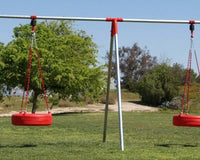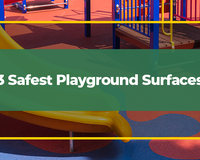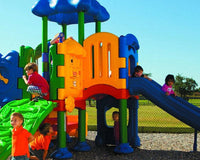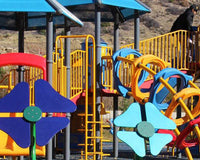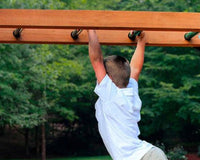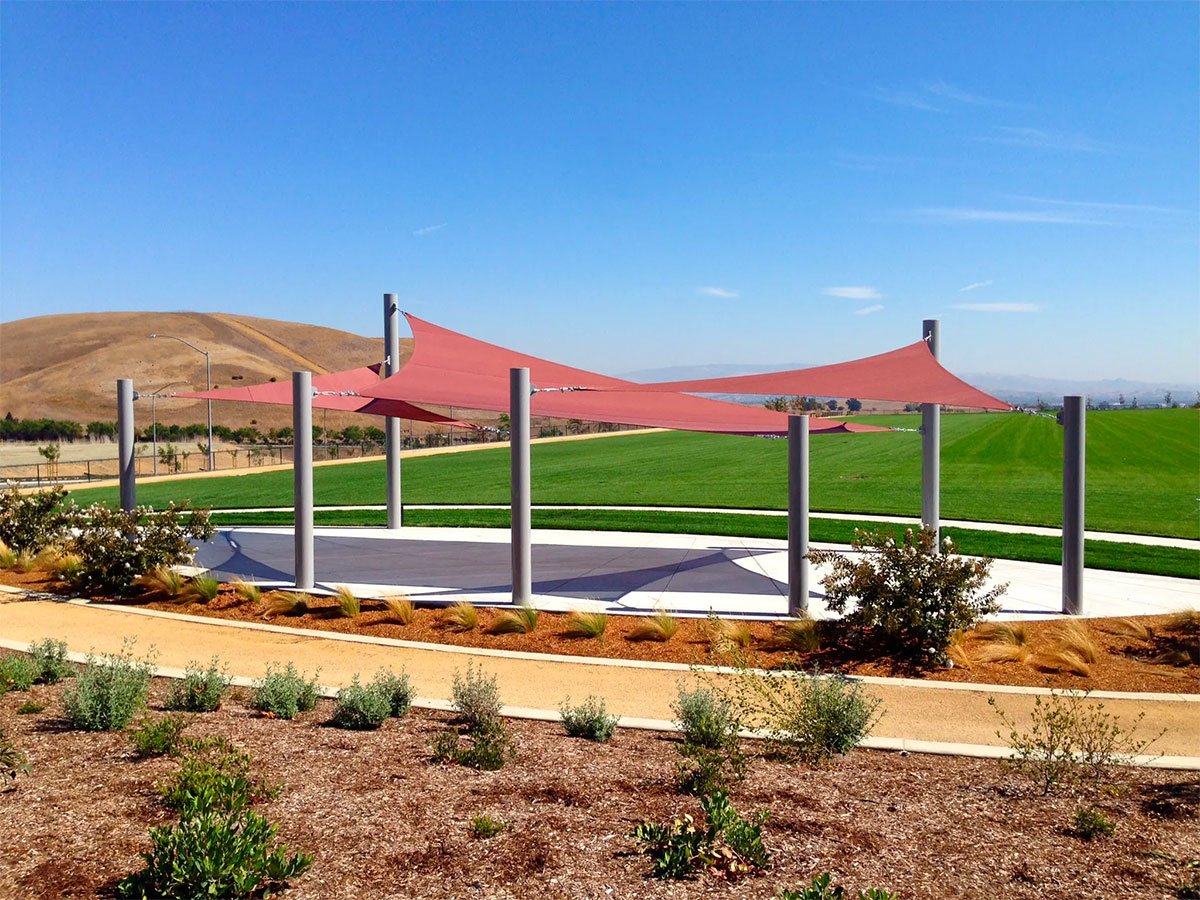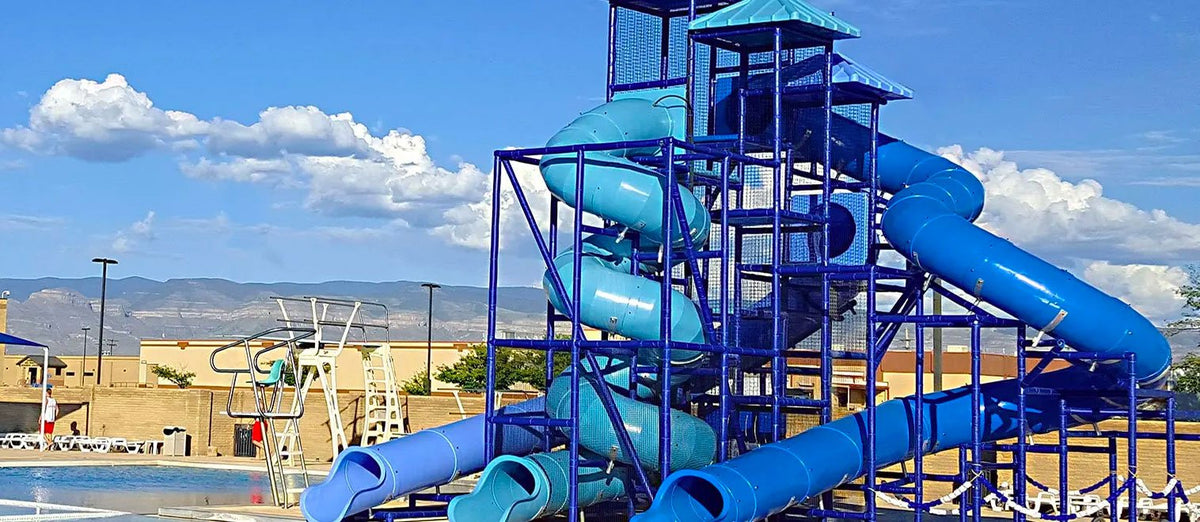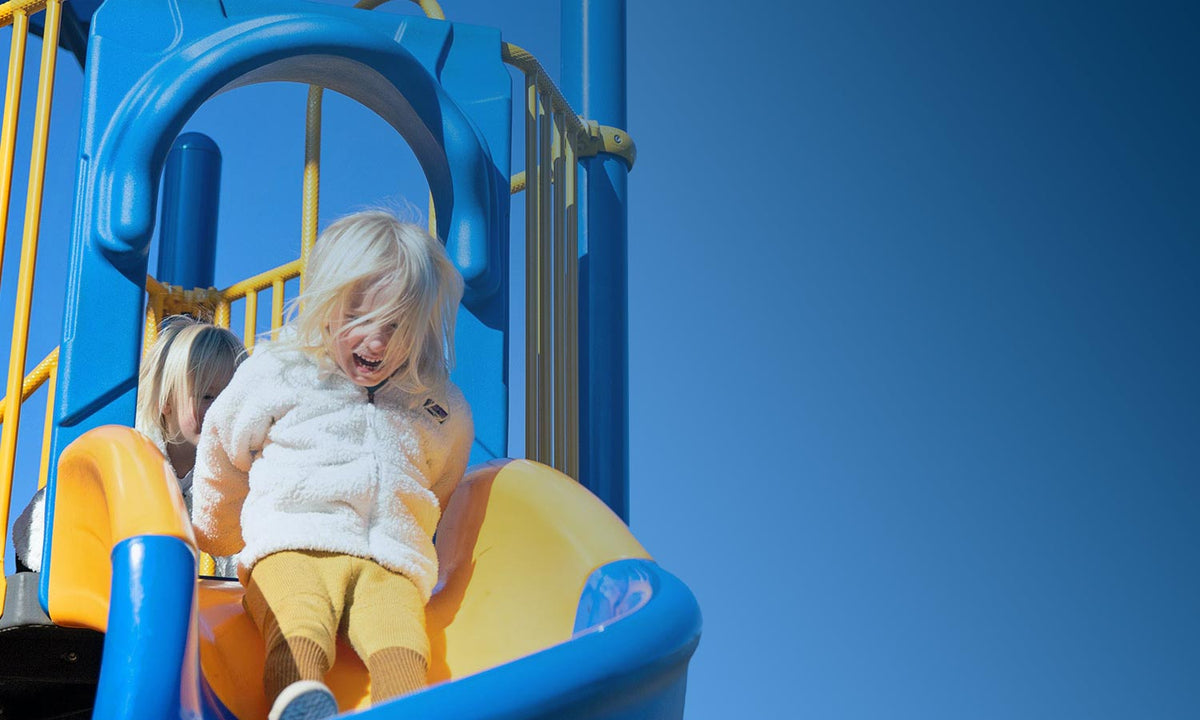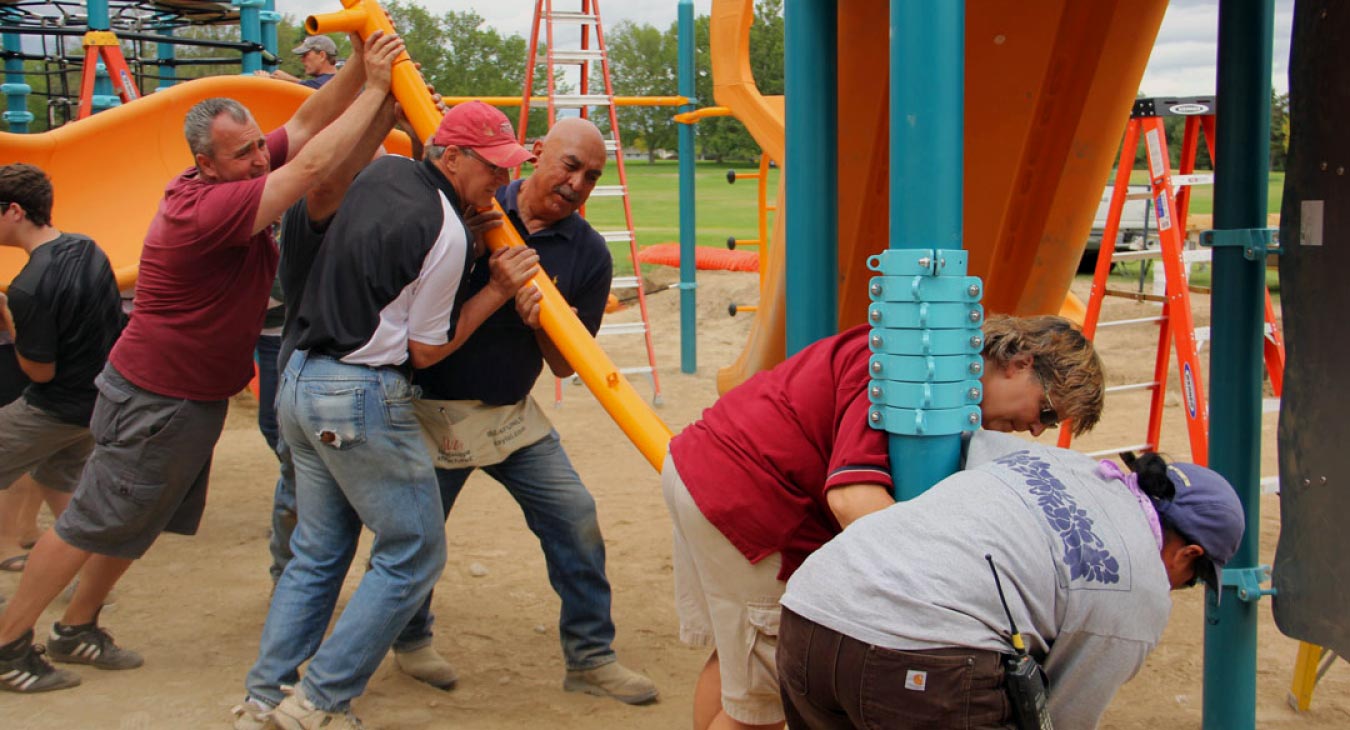When selecting the right playground surfacing option, it’s important to weigh the pros and cons carefully. One of the most common debates today is pour-in-place vs rubber tiles, but which surfacing system better fits your needs?
In this guide, we'll discuss two popular solutions, poured-in-place rubber and rubber tiles, to help you choose the safest and most cost-effective option for your next playground project.
What Is Poured-in-Place Rubber Surfacing?
Poured-in-place rubber (PIP rubber surfacing) is a seamless safety surface made from mixed rubber and binding agents. It’s troweled directly onto asphalt, concrete, or compacted stone to create a durable, long-lasting playground surface.
One of the top features of poured-in-place rubber surfaces is their ability to form a seamless, flat surface without edges, gaps, or uneven areas. This makes them popular for busy playground equipment environments where falls and trips must be minimized.
WillyGoat installs poured-in-place rubber surfacing on a variety of base materials and adapts each installation to fit specific site conditions. The process supports consistent results across playgrounds, parks, schools, and other public spaces, helping to meet both safety and accessibility standards.
What Are Rubber Playground Tiles?
Rubber tiles are pre-formed units designed to fit together, usually as interlocking tiles, to create a finished play surface. They are assembled onto the prepared ground, often using adhesives or mechanical connections for stronger bonding.
Designed for faster installation, rubber playground tiles are easily carried, arranged, and replaced, making them ideal for areas needing rapid setup or small expansions. Tiles offer a modular solution, but do come with their maintenance considerations over time.
Fact: Play boosts cognitive development. According to child psychologists, unstructured play, such as playground activities, helps build executive function skills like decision-making, attention control, and problem-solving.
Comparing Installation Processes
Installing poured-in-place rubber requires certified installers, specialized equipment, and ideal weather conditions to ensure a perfect cure. Rubber and binder materials are mixed on-site, manually poured, and finished across the play area.
By contrast, rubber tiles are considered much easier to install and involve less specialized skill. Professionals can place and fit the tiles over prepared asphalt or concrete surfaces with minimal interruption, but they must ensure proper adhesion and alignment to avoid weak spots.
Surface Seamlessness and Safety Benefits
Pour-in-place far surpasses other options in terms of creating a seamless surface. Its continuous design means no uneven edges, significantly reducing the risk of tripping hazards in heavy-use zones like under swings or around climbing structures.
While rubber tiles can form strong surface joins during installation, over time, through heavy traffic and weather fluctuations, small gaps can form, opening areas that trap dirt, debris, or snag unsuspecting feet. A seamless foundation remains a top priority for maximum ongoing safety.WillyGoat’s installation method ensures a smooth, edge-free coating that supports long-term safety and ease of maintenance. By applying the surface uniformly across the entire playground layout, the result is a clean, stable foundation suited for all types of recreational environments.
Fact: Physical play supports emotional regulation. Children use active outdoor play to release energy and process emotions, which helps them develop better self-control.
Maintenance Needs and Long-Term Costs
More maintenance is often needed for rubber tiles as outdoor conditions shift them and break down adhesives. Severe UV exposure and water infiltration between the tiles can loosen their bonds, requiring extra care or replacement over time.
Poured-in-place offers extremely little maintenance in comparison, apart from basic sweeping, rinsing, and periodic inspections. For clients concerned about constant maintenance and long-term maintenance costs, choosing unitary place rubber surfaces will create major savings year after year.
Durability for High Traffic Areas
Both systems were engineered to withstand outdoor playground environments, but there are differences regarding high traffic areas. Poured rubber surfaces are highly bonded into one continuous material, distributing force and handling pressure from running, jumping, and impacts efficiently.
In contrast, tiles have seams that can wear faster in extremely active areas, especially near playground equipment or movement zones. If your location expects repeated daily heavy use, poured in place is typically the more durable solution over the long run.
Fact: Risky play builds confidence. Child development experts note that calculated risks, like climbing or jumping, help kids develop resilience and self-trust.
Color Designs and Customization Options
When it comes to creativity, poured rubber wins with a wide array of color options and artistic layouts. You can integrate logos, graphic games, school crests, or themed colors directly into the unitary material.
While some tiles offer multiple shades and patterns, poured-in-place surfaces make it far easier to craft bespoke, aesthetically pleasing installations with vibrant layouts that excite and engage kids at every turn.
WillyGoat provides multiple customization options for pour-in-surfacing, including solid colors, 50/50 blends, and custom color mixes. These can be tailored to fit educational themes, branding, or specific design goals, helping to create inviting environments that encourage active play and support visual storytelling on the playground.
Repairability and Replacement Ease
Should damage occur, rubber tiles have the advantage of spot repairs — simply replace the affected piece without disturbing the whole play area. However, matching old and new tiles exactly can sometimes be challenging due to color fading from UV rays.
Repairing poured-in-place surfacing involves patching or refinishing small areas. Although it may require professional installers again, it delivers seamless repairs that retain surface integrity and aesthetic symmetry better over time.
Weather Exposure and Resilience
Both systems are built for outdoor exposure to tough seasons, but poured-in-place is better equipped to resist extreme weather like baking sun, freezing winters, and heavy rains. Its bonded base doesn't shift or allow loose spots even after repeated soakings.
Tiles, though tough, can slowly degrade at the seams, especially if debris, moisture, or expanding ice gets into gap lines. For locations experiencing intense seasonal shifts, superior weather resilience from unitary flooring options is invaluable.
WillyGoat’s poured-in-place installations are engineered to endure a range of climates and are applied with high-quality binding agents to help maintain surface integrity year-round. This makes them a practical choice for playgrounds exposed to fluctuating weather conditions.

Find the Best Rubber Surfacing for Your Playground
When comparing pour-in-place rubber to rubber tiles, long-term performance, safety, and customization set pour-in-place apart. At WillyGoat, we deliver seamless, durable surfacing that supports heavy use, resists wear, and offers unmatched design flexibility.
Rubber tiles may work for smaller budgets or low-traffic areas, but for a lasting, professional-grade playground surface, trust WillyGoat’s expert installation, premium EPDM granules, and complete customization options. Build safer, smarter, and more vibrant play spaces—without compromise.




